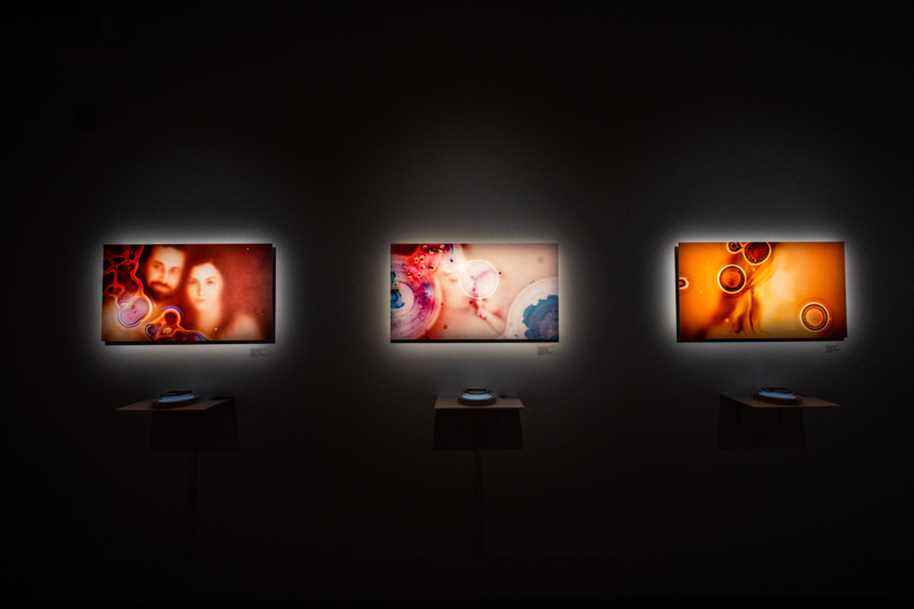Posted at 8:00 a.m.
Biological art, or bioart, is the use of tissues or microorganisms for artistic creations. This is the niche of Günes-Hélène Isitan, a Quebec artist who studied photography at Concordia University and microbiology at the University of Sherbrooke, and who is interested in the relationship between humans and microorganisms. A topical interest as our planet still battles the COVID-19 virus. The pandemic has made us realize even more that our body does not have a “stand alone” existence. Bacteria and viruses are not invaders, but are part of our environment, our constitution, this “porous humanity”, the skin not being the border of the human.
Born of Turkish and Quebecois parents, Günes-Hélène Isitan followed in the footsteps of her mother, director and documentary filmmaker Caroline Poliquin, who, like her, is interested in biological diversity, and who will release her latest film, Humus, May 20. A film about regenerative agriculture and the ties that bind us to the land.
But her daughter instead celebrates our own nature by creating in an incubator. For porous humanity, she used small photographic portraits placed in Petri dishes, these small shallow cylinders in which micro-organisms are cultured. For these kinds of creations, she had to acquire health and safety training at Concordia.
“When you handle environmental bacteria, you have to take precautions,” she says. Anthrax, for example, is a bacterium found naturally in the soil. In the human skin flora, pathogens are held at gunpoint by other microorganisms and therefore do not multiply. But as I multiply micro-organisms, I have to work at home under a hood that protects me. And when I “grow” gut bacteria, I need more containment. I then go to the University of Sherbrooke, in the laboratory. »

PHOTO DOMINICK GRAVEL, THE PRESS
Günes-Helene Isitan
For porous humanity, she used samples of the microbiota from the skin of the face of men and women of all origins. The skin microbiota is our skin flora, that is to say all the microorganisms that are found on our epidermis.

PHOTO PROVIDED BY THE ARTIST
The work is on the left. The photographic film in the Petri dish, on the right.
Günes-Hélène Isitan took samples of the skin microbiota from these people with a cotton swab and made the microorganisms reproduce in Petri dishes using nutrients. These micro-organisms developed in a few days and “invaded” the space of the photograph, creating multicolored shapes that correspond to their movement, mixing in their wake the pigments contained in each portrait.
In this approximately one-minute video, shown in the exhibition hall, the speed of the spread of microorganisms was accelerated, because the images were shot over 11 days. The artist then digitized the image “conquered” by the micro-organisms, then enlarged it to obtain works of 46 cm x 80 cm. Works that she considers as “collaborations” between her and the infinitely small “living”.
“Through this active process, micro-organisms ‘paint’ their presence on the image, while literally dissolving our physical boundaries, says Günes-Hélène Isitan. The collaborative work that emerges thus highlights our hybrid state, both human and microbial. On the same work are therefore both the image of the person and the traces of the invisible micro-organisms that live in symbiosis with it.

EDITING PROVIDED BY THE ARTIST
Four stages in the colonization of a photograph by microorganisms from the skin microbiota of Annabelle, the young girl in the top left, with her dog Maya. If the artist does not stop the process, the photo is completely covered.
In these times of pandemic, masks, distancing and anxiety, the artist finds it important to put the microbial world into perspective. “One day we will have to start hugging friends and family again, without protection and without apprehension,” says Günes-Hélène Isitan, considered one of the first Canadian artists to take an interest in the human microbiota.
Examples of works by Günes-Hélène Isitan
-

PHOTO DOMINICK GRAVEL, THE PRESS
Hybrid Zania-Microorganismsseries Hybridities2017, digitized biological art, digital print on chrome paper, mounted on aluminium, 46 cm x 80 cm
-

PHOTO DOMINICK GRAVEL, THE PRESS
Hybrid Günes-Microorganismsseries Hybridities2017
-

PHOTO PROVIDED BY THE ARTIST
Hybrid Vincent-Microorganismsseries Hybridities2017
-

PHOTO PROVIDED BY THE ARTIST
Hybrid Vincent Gabriel-Microorganismsseries Hybridities2017
1/4
Represented by the uNo gallery, from Quebec, since its beginnings in 2013, Günes-Hélène Isitan is motivated to create while making us aware of what really constitutes us. She explains that bacteria in our gut microbiota produce vitamins we need to survive, which regulate certain neurotransmitters that affect mood and cognition, as well as anxiety and pain management. “In young children, it is also the relationship between bacteria and the immune system that allows the latter to have a balanced response, quite effective against pathogens, but not harmful to humans,” she says.
To illustrate her point, she created the work Please Share during the pandemic. A thermoformed bust in the form of a vending machine that contains all sorts of “gut microorganisms”, turns them into 3D-printed plastic models. A playful way to awaken us to their reality. “But just because something is alive doesn’t mean you shouldn’t protect yourself,” says the 43-year-old artist. However, she believes that we must stop being afraid of what has always constituted us. Just take it into account and see how these intricate creatures can make beautiful designs…
Until April 10, at the Maison de la culture Notre-Dame-de-Grâce

